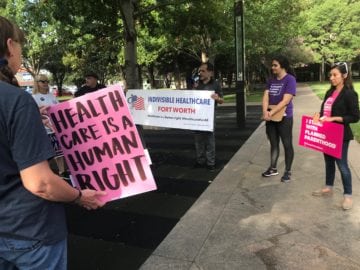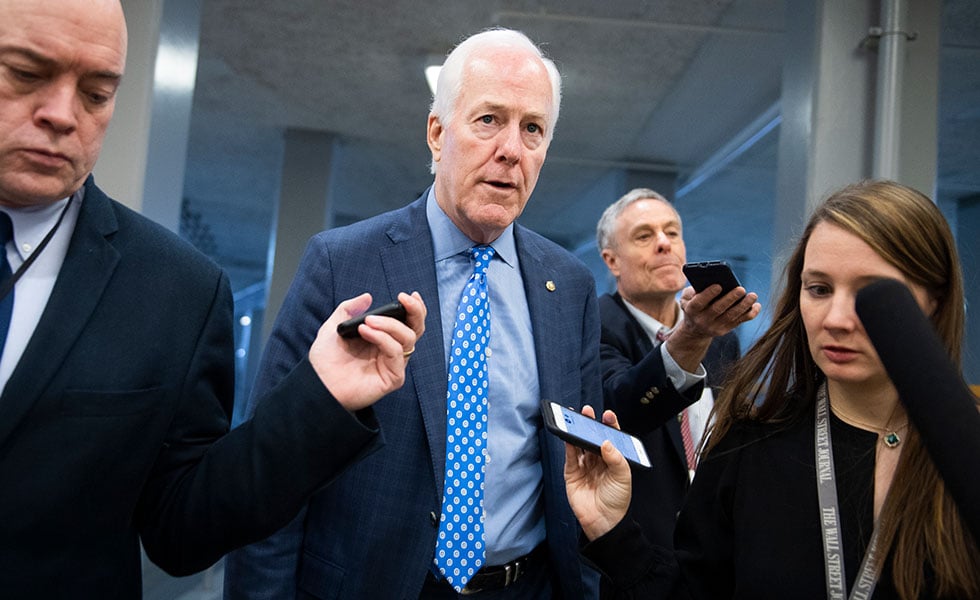
Ken Paxton Wants to Eliminate the ACA’s Pre-Existing Condition Protections. How Would That Affect Texans?
More than a quarter of adults in Texas have a pre-existing condition that could make them unable to get health coverage without the ACA’s requirements.

The stories aren’t hard to find: the young uninsured woman who was hit with a $137,000 bill for brain cancer treatment. The woman whose insurance company delayed paying for surgery while her breast cancer spread. The families that sold their homes to afford medical care. The patients who moved to a different state. The ones who filed for bankruptcy. The ones who died.
This is the pre-Affordable Care Act insurance market that Texas Attorney General Ken Paxton, along with 19 other Republican attorneys general, is fighting for in court. In February, the 20 states filed a lawsuit asking a federal judge to strike down the ACA. The plaintiffs argue that Congress’ elimination of the uninsured penalty this year rendered the law unconstitutional. Last week, attorneys for Paxton’s office asked a federal judge in Fort Worth to block the ACA while the lawsuit plays out. Experts say a favorable ruling for the conservative attorneys general could kick millions of Americans off their health coverage and have far-reaching and catastrophic effects on the U.S. health care system.

The lawsuit has been criticized by attorneys and legislators across the political spectrum as “absurd,” frivolous” and “far-fetched.” But in June, the Trump administration sided with Paxton in part, arguing that the popular pre-existing conditions protections are unconstitutional. Paxton and the other attorneys general seek to return their states to a pre-ACA market, where people with pre-existing conditions who don’t have employer-sponsored or public insurance could routinely be left to fend for themselves.
So what did (and would) that actually look like in Texas, where about 1.6 million people get their insurance on the individual market?
“Texas was not a state that applied much in the way of regulations for individual health insurance, so it was very difficult for people with any kind of pre-existing conditions to get coverage [before the ACA],” said Karen Pollitz, a senior fellow at the Kaiser Family Foundation.
Texas already has the highest uninsured rate in the country, and more than 4.5 million adults under 65 in the state have a pre-existing condition that would likely make them uninsurable without the ACA’s protections. If the plaintiffs win, millions of other patients could be denied care or charged more for coverage.
“It’s kind of like a game of musical chairs,” Pollitz said. “When the music stops, if you lose your job-based coverage and you have a pre-existing condition and all you have is the individual market with no protections — you’re out.”
The plaintiffs argue that states should regulate their own insurance markets. Paxton’s office did not respond to a request for comment, and he was not in court for the hearing last week, but his attorneys argued that the ACA infringes on state sovereignty.
“It was very difficult for people with any kind of pre-existing conditions to get coverage [before the ACA].”
Robert Henneke, an attorney with the conservative Texas Public Policy Foundation who is involved in the case, said outside the Fort Worth courtroom last week that “there’s nothing magical about the federal government regulating health insurance.
“Prior to the Affordable Care Act … Texas had its own regulatory scheme that provided for choice and competition,” Henneke said. “Without federal micromanagement, mismanagement of health insurance, you actually have better results.”
But Texas did little to regulate individual insurance plans, so insurers did whatever they could to avoid taking on high-cost patients. That includes charging people more based on factors like gender, age and industry. Women were routinely charged more than men.
There was no requirement that health plans in Texas’ individual marketplace offer maternity coverage, so none did. If a woman was pregnant, or thinking about becoming pregnant, insurers wouldn’t cover her. Men could also be rejected if the insurer found out that their partner might become pregnant. Insurance companies could refuse to cover people who were sick, and they sometimes tried to rescind coverage if a client fell ill.
The only option for people who were sick or pregnant was to join their state’s high-risk pool, a separate insurance market just for patients with pre-existing conditions. But these were notoriously small and coverage was exorbitantly expensive. (In Texas, premiums in the high-risk pool cost twice as much as on the regular market.)

Because there was generally a 12-month waiting period before coverage related to the patient’s pre-existing condition would actually begin, patients would have to pay hundreds of dollars each month for a year before they even began to get the care they needed. For certain conditions, patients might be able to pay for treatment without coverage, or survive a lapse in care. But for many, that’s simply not an option.
“A one-year waiting period if you’re pregnant? Well, that’s not gonna work,” Pollitz said. “If you have cancer? That’s not gonna work … You can’t wait that long. And most people certainly couldn’t afford to pay out of pocket, for any of those conditions, without insurance.”
The average cost of premium plus deductible for high-risk pool members in Texas was nearly $10,000 per year, according to a 2008 report from the the left-leaning Center for Public Policy Priorities (CPPP) — cost-prohibitive for many patients. As a result, enrollment in Texas’ pool sat at fewer than 28,000 people.
Those who couldn’t pay were left to try to find a job that would offer insurance, marry someone with job-based coverage, move to a different state, blow through life savings and far worse.
U.S. District Judge Reed O’Connor promised the plaintiffs he’d issue a decision soon. The Trump administration, saying blocking the law immediately could cause “chaos,” has asked the judge not to make any big changes until after open enrollment for insurance ends in January. That’s also incidentally after midterm elections in November. If O’Connor does issue an injunction to the ACA, that would “dump an enormous mess back on Congress and the state Legislature, and neither one looks like it’s prepared,” said Stacey Pogue, a health analyst at CPPP who has been tracking insurance policy since before the ACA.


